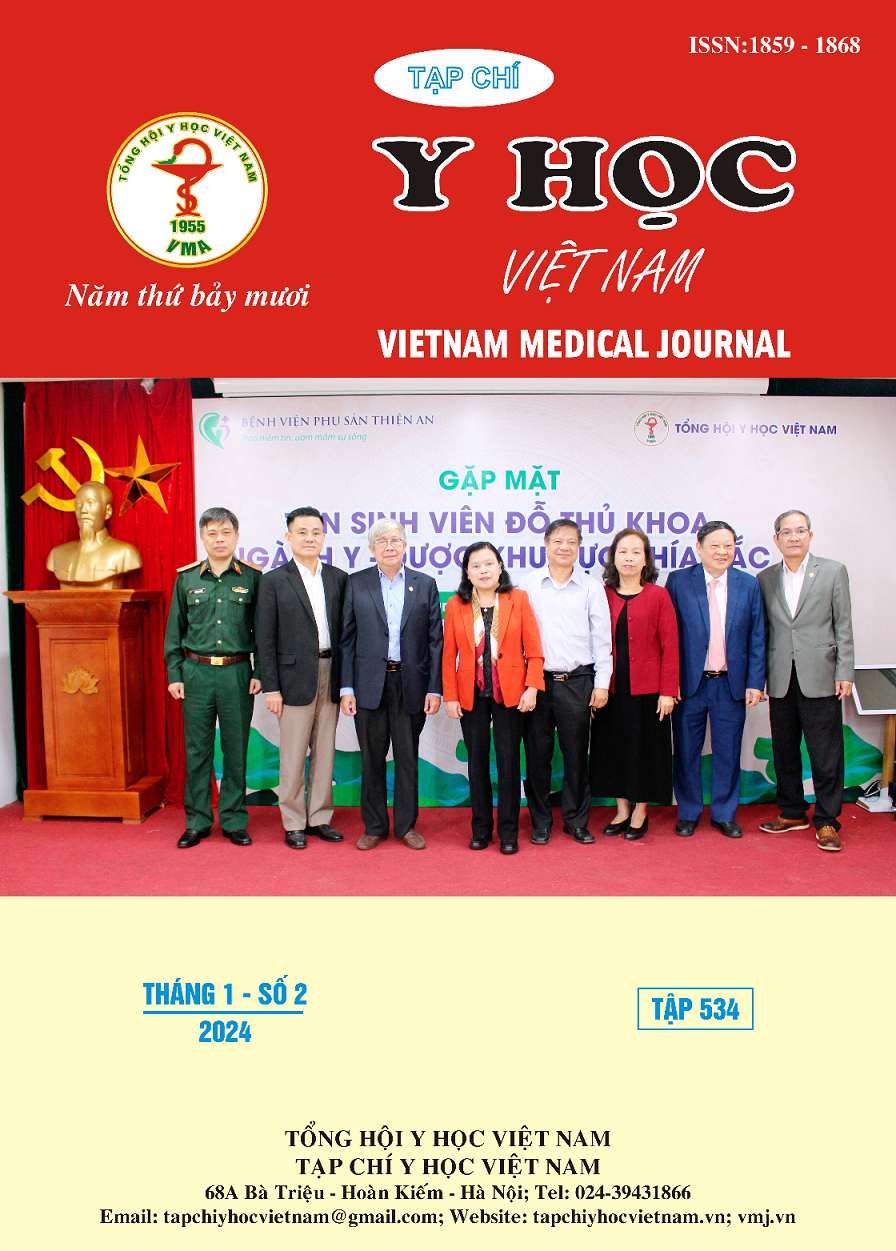CLINICAL FEATURES AND LABORATORY CHARACTERISTICS OF PATIENTS WITH ACUTE MASSIVE PARACETAMOL OVERDOSE
Main Article Content
Abstract
Objective: this study aimed to describe the clinical features and laboratory characteristics of patients with acute massive paracetamol overdose. Subjects and methods: a descriptive study on 36 patients with acute massive paracetamol poisoning treated at the Poison Control Center of Bach Mai Hospital (PCC) from January 2021 to July 2023. Results: The average age was 27 ± 12,4 and the majority were female (61,1%). The median oral dose was 584mg/kg. The onset symptoms of toxicity usually develop within 2 hours of exposure. Patients with acute liver injury ingested larger doses and were admitted to the PCC later than the group without damage. The patient’s severity was mainly moderate and severe. Common clinical symptoms were nausea and vomiting (83,3%). The common signs presented on admission were tachypnea (66,7%), tachycardia (52,8%), unconsciousness (25%) and one patient had hypotension (2,8%). Laboratory findings: acute liver injury occurred in 16 patients (44,4%); liver toxicity in 4 patients (11,1%); 5.6% developed acute liver failure required plasma exchange. Symptoms of mitochondrial disorders were common (metabolic acidosis 83,3% and unconsciousness 25%). Other abnormalities were hypokalemia (69,4%), and coagulation disorders (50%). Conclusions: Massive paracetamol overdose often presents with early onset and complicated symptoms. Mitochondrial dysfunctions (consciousness disorders, metabolic acidosis, increased lactate) were common. The rate of liver damage and severity of poisoning were more severe than common paracetamol poisoning significantly.
Article Details
References
2. Marks DJB, Dargan PI, Archer JRH, et al. Outcomes from massive paracetamol overdose: a retrospective observational study. Br J Clin Pharmacol. 2017;83(6): 1263-1272. doi:10.1111/ bcp.13214
3. Chiew AL, Reith D, Pomerleau A, et al. Updated guidelines for the management of paracetamol poisoning in Australia and New Zealand. Med J Aust. 2020;212(4):175-183. doi:10.5694/mja2.50428
4. Hou YC, Lin JL, Huang WH, et al. Outcomes of patients with acetaminophen-associated toxic hepatitis at a Far East poison center. Springerplus. 2013; 2:674. doi:10.1186/2193-1801-2-674
5. Downs JW, Cumpston KL, Kershner EK, Troendle MM, Rose SR, Wills BK. Clinical outcome of massive acetaminophen overdose treated with standard-dose N-acetylcysteine. Clin Toxicol (Phila). 2021; 59(10):932-936. doi:10. 1080/ 15563650.2021.1887493
6. Bacle A, Pronier C, Gilardi H, Polard E, Potin S, Scailteux LM. Hepatotoxicity risk factors and acetaminophen dose adjustment, do prescribers give this issue adequate consideration? A French university hospital study. Eur J Clin Pharmacol. 2019;75(8):1143-1151. doi:10.1007/s00228-019-02674-5
7. Cairney DG, Beckwith HKS, Al-Hourani K, Eddleston M, Bateman DN, Dear JW. Plasma paracetamol concentration at hospital presentation has a dose-dependent relationship with liver injury despite prompt treatment with intravenous acetylcysteine. Clin Toxicol (Phila). 2016;54(5): 405-410. doi: 10.3109/ 15563650. 2016.1159309
8. Phạm Thị Minh. Nghiên Cứu Đặc Điểm Lâm Sàng, Cận Lâm Sàng và Điều Trị Ngộ Độc Cấp Paracetamol. Luận văn bác sĩ chuyên khoa cấp II. Trường Đại học Y Hà Nội; 2005
9. Shah AD, Wood DM, Dargan PI. Understanding lactic acidosis in paracetamol (acetaminophen) poisoning. Br J Clin Pharmacol. 2011;71(1):20-28. doi:10.1111/j.1365-2125.2010. 03765.x


